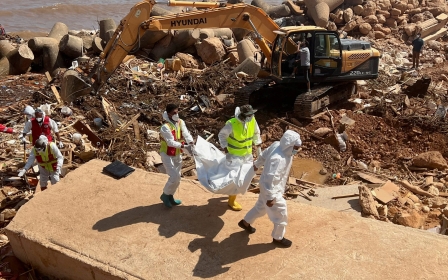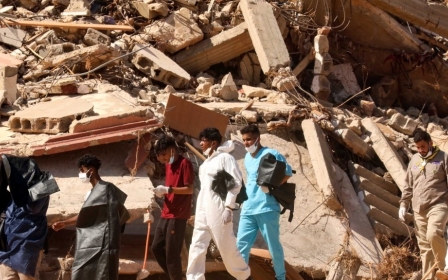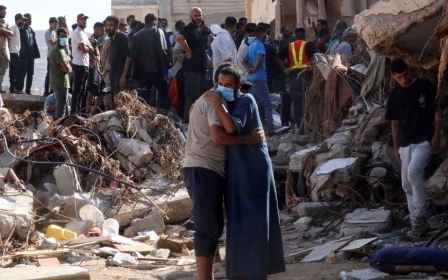Libya Floods: Burst dams had decades-old cracks, says official
Two dams that burst in a hurricane-strength storm, unleashing a wall of water that killed thousands in the Libyan port of Derna, had been cracked since 1998, an official said.
Prosecutor general Al-Seddik Al-Sour has announced an investigation into the circumstances leading to the collapse, culminating in the catastrophic flash flood that swept through the city on Sunday.
Like much of Libya's crumbling infrastructure, the two dams that had been built to hold back water from Derna fell into disrepair during years of neglect, conflict and division in chaos-ridden Libya.
The North African country is currently ruled by two rival administrations that have battled for power since a Nato-backed uprising toppled and killed longtime dictator Muammar Gaddafi in 2011. A 2020 ceasefire has largely held.
On 10 September, Storm Daniel made landfall in eastern Libya, triggering torrential rain in the hills above Derna.
Stay informed with MEE's newsletters
Sign up to get the latest alerts, insights and analysis, starting with Turkey Unpacked
Abu Mansur dam, 13 kilometres (just over nine miles) from the city, whose reservoir held 22.5 million cubic metres (nearly 800 million cubic feet) of water, collapsed first.
The deluge then broke Al Bilad, the second dam, which had a capacity of 1.5 million cubic metres and is just a kilometre from the coastal city. The wall of water and debris swept through the normally dry riverbed or wadi that cuts through the city centre.
Both dams were constructed by a Yugoslav company in the 1970s, "not to collect water but to protect Derna from floods", according to Sour. Before the dams were built, Derna was hit by a series of significant floods from the river in the mid-20th century.
According to the Libyan prosecutor, those responsible for managing dams in Libya had reported cracks in both of them as early as 1998.
Two years later, Libyan authorities hired an Italian engineering firm to assess the damage. It confirmed the cracks and recommended the construction of a third dam to protect the city, said Sour.
'Procrastination'
In 2007, Gaddafi's government entrusted repair work to a Turkish company.
But because of payment issues, the company did not commence the work until October 2010, and halted less than five months later after the revolution that led to Gaddafi's downfall began.
Since then, a budget has been allocated every year to repair the two dams, but none of the successive governments since 2011 has undertaken the work, according to an official.
In a 2021 report from the Libyan audit bureau, officials criticised "procrastination" on resuming repair work on the two dams.
In November 2022, engineer and academic Abdel Wanis Ashour warned in a study that a "catastrophe" threatened Derna if the authorities did not carry out maintenance on the dams.
The warning went unheeded even though Libya boasts Africa's richest oil reserves and is not lacking in resources.
World Meteorological Organization chief Petteri Taalas said many deaths could have been avoided if early warning and emergency management systems had functioned properly in the war-scarred country.
"They could have issued the warnings and the emergency management forces would have been able to carry out the evacuation of the people, and we could have avoided most of the human casualties," he said.
Middle East Eye delivers independent and unrivalled coverage and analysis of the Middle East, North Africa and beyond. To learn more about republishing this content and the associated fees, please fill out this form. More about MEE can be found here.





